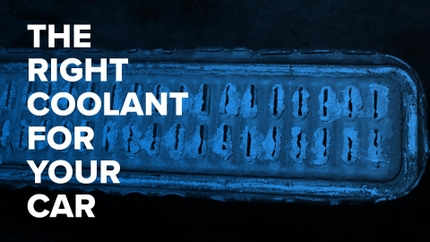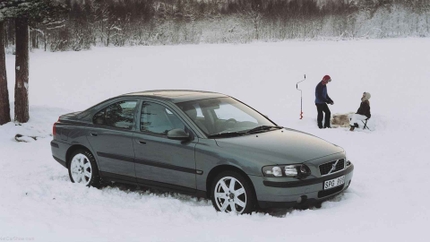We live in a day and age where we expect our cars to start every time. Unfortunately, many P1 Volvo owners have discovered that their cars would not start due to a steering lock failure. Steering column lock failure is not covered under any extended warranties, but Volvo eventually acknowledged this problem and did away with the steering lock on 2009 and later model year Volvo C30s, Volvo S40s, Volvo V50s, and Volvo C70s.
For those with 2004-2008 P1s, upon inserting your key into the ignition, you should hear a click noise as the steer lock recedes and allows you to rotate the steering wheel freely. However, if this lock becomes jammed, the warning message "Turn Steering Try Start Again" will appear on the gauge cluster and the car will not start.
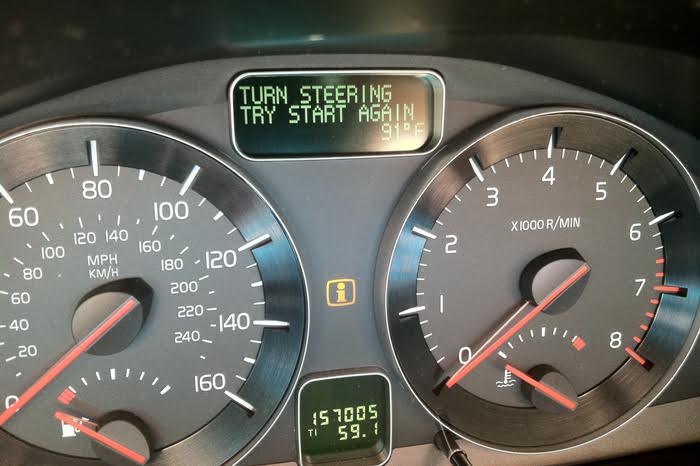
Sometimes, simply jiggling the steering wheel while re-inserting the key is enough to get the steering lock to recede. However, it's likely that the problem is with the steering lock motor itself. At this point, there are two options: Tow the vehicle to the dealer for a costly repair or break out your tools for a quick do-it-yourself fix.
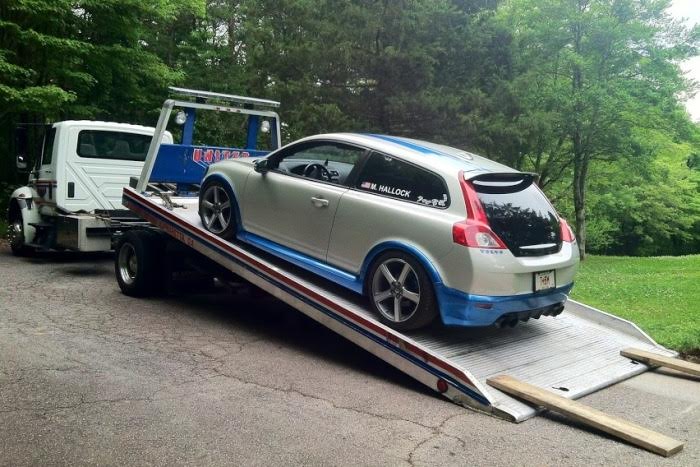
Please note that this DIY fix may not be a permanent solution. However, at the expense and hassle of towing the vehicle to the dealer for repair, a DIY mechanic has nothing to lose.
Necessary Tools:
- T20 torx driver
- Rubber mallet
- An old rag or bubble wrap
Steering Lock Removal
With the key removed from the ignition, open the driver's door and grab the side panel of the dash board. Forcefully pull it outward to remove it from the vehicle.
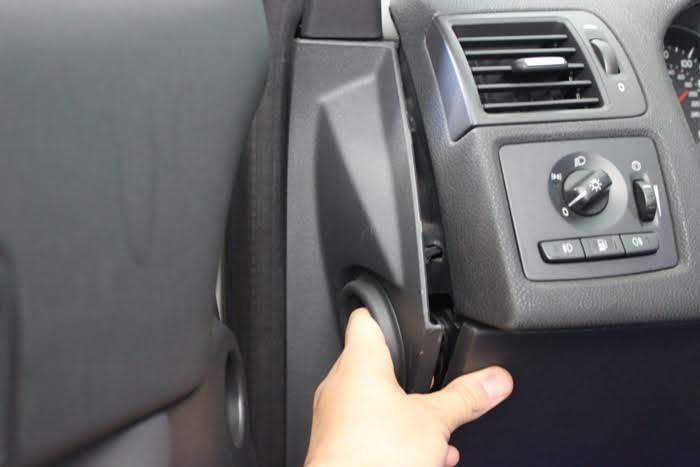
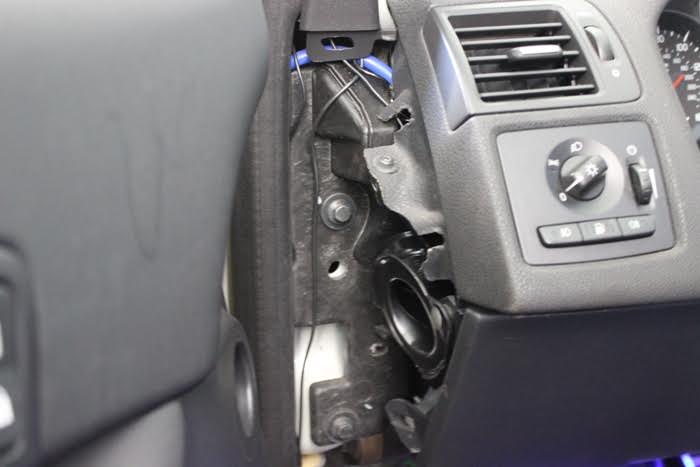
Rotate the side window defroster duct by 180 degrees.
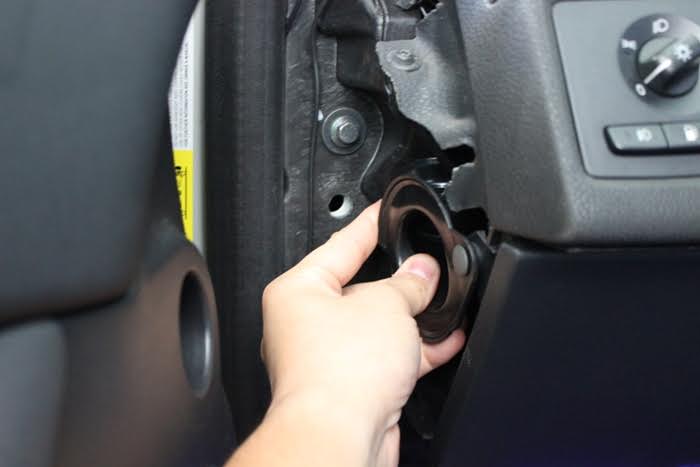
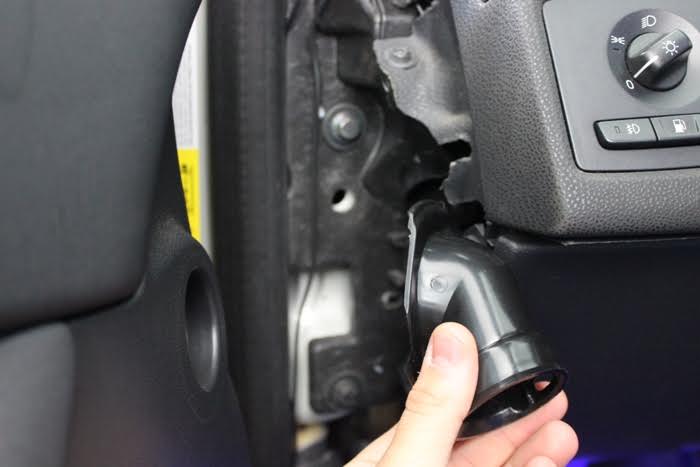
Pry downward and outward on the panel behind the water fall console to remove it.
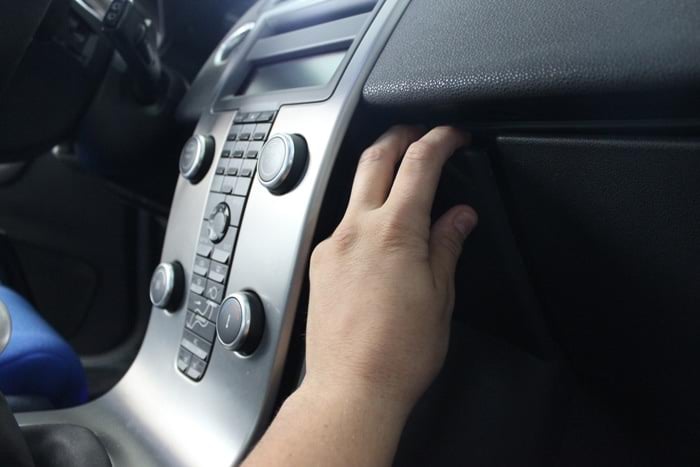
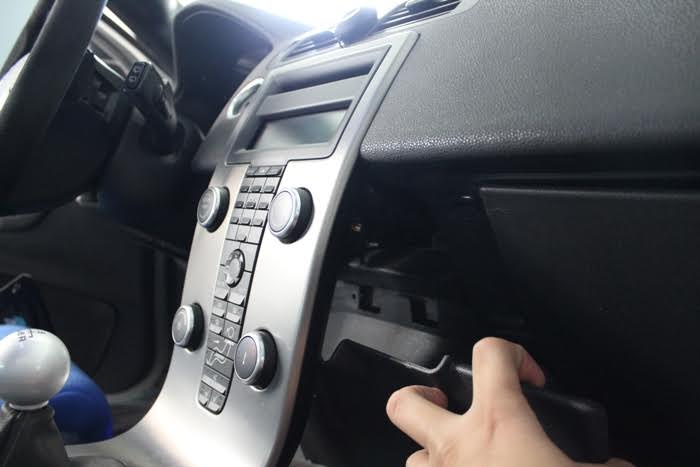
Using the T20 torx driver, remove the single screw under the light switch panel.
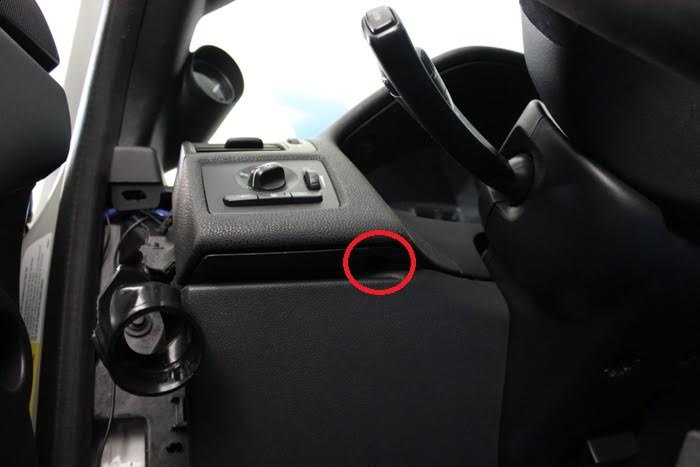
Remove the two T20 torx screws from the footwell area. The neon tube in this picture is Volvo's rare "Illumination" option for color changing footwell lights. If your vehicle is equipped with this option, unplug the wires from the end of this tube before proceeding further.
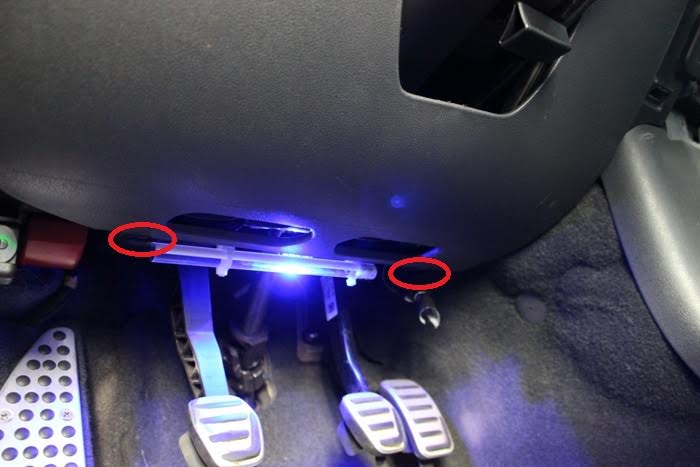
Once all screws and necessary wires have been disconnected, pull the cover panel straight down and remove it from the vehicle.
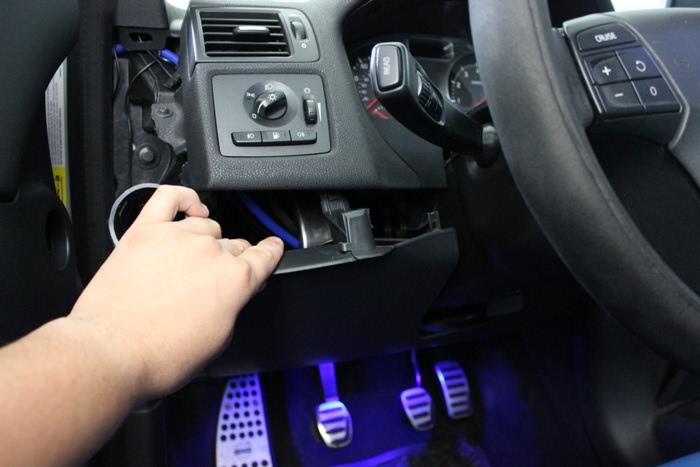
You will now have clear view of the steering column lock.
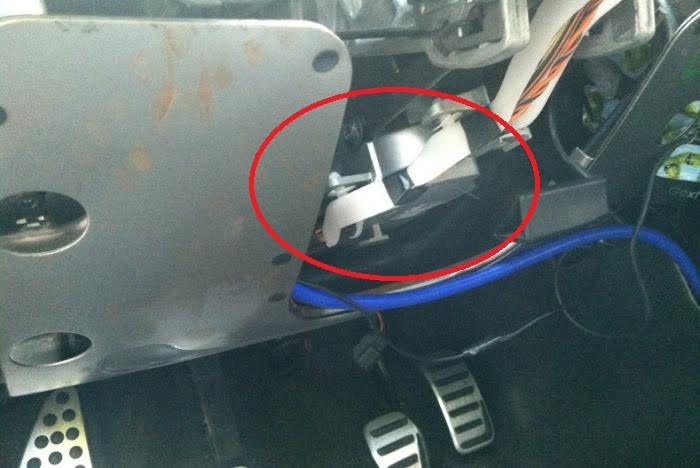
Using the T20 torx driver, remove the screw which holds the column lock in place.
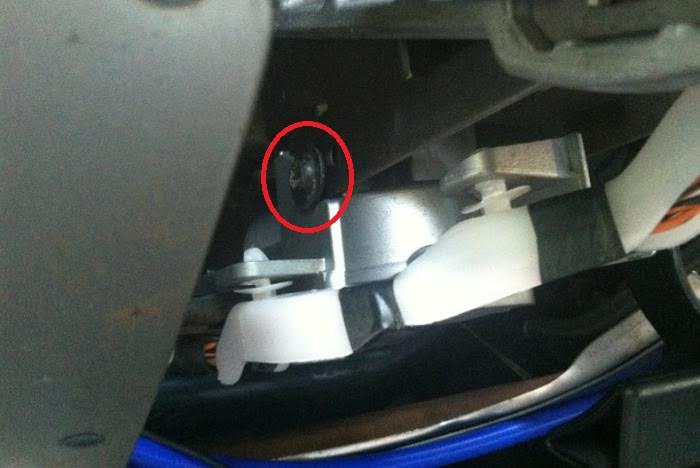
Pry out the small black plastic piece, circled in the picture below. There is a release spring on the back which can jam and prevent the steering lock from properly receding. You may discard this piece, as it is not necessary for the steering lock to operate.
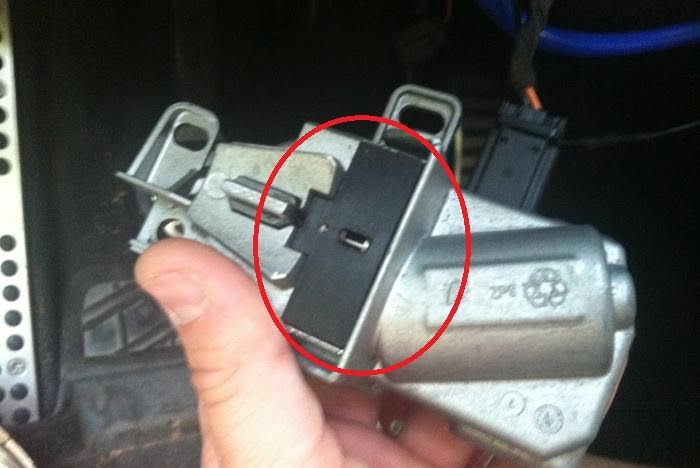
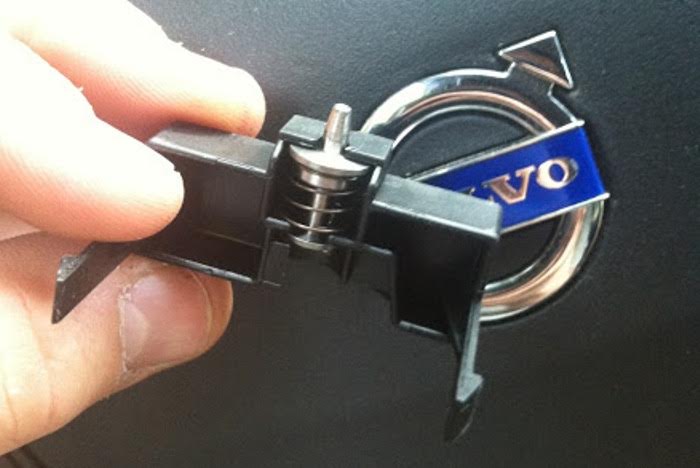
The lock pin can either get jammed up or down. Disconnect the electrical wiring clip and gently tap the back of the steering lock device with a rubber mallet to loosen anything which might be stuck.
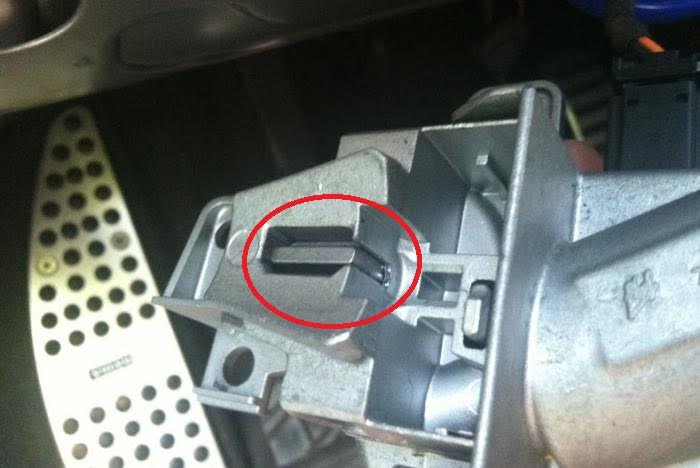
At this point, reconnect the electric plug and attempt starting the car while holding the steering lock. If the pin does not slide up and down, try tapping it with the mallet again. Keep removing and reinserting the key into the ignition until the pin automatically recedes and the vehicle is capable of starting.
For those who have experienced this problem once, it is very likely it will occur again. Unfortunately, simply removing the steering lock is not an option. The car looks for this mechanism prior to initial start up and will not allow the vehicle to crank if the steering lock is not present.
Rather than reattaching the lock to the steering column, I suggest wrapping the entire component in a spare rag or bubble wrap and leaving it in the open space behind the steering column cover panel. This provides easier access to the steering lock in the event that it seizes up again, while also discouraging future failure by separating it from other hindering components.
A new lock may also be purchased using Volvo part number 31340733. However, professional installation will be required as the steering lock must be programmed to your VIN by the dealer. Expect to pay over $100 for the steering lock, 1 hour of installation labor, and additional software programming fees. As mentioned above, such a costly replacement for such a basic component, a DIY mechanic has nothing to lose when attempting to fix this problem themselves.







